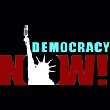Bolivia could earn hundreds of millions under global warming deal

Picture: "Cielos bolivianos" By: NEB / Bolivia Now
Articulo publicado en mongabay.com
http://news.mongabay.com/2006/1105-bolivia.html
November 5, 2006
Bolivia could earn hundreds of millions of dollars through a global warming deal that may be proposed this week at climate talks between 189 countries in Nairobi, Kenya.
At last year's negotiations in Montreal, a coalition of tropical developing countries lead by Papua New Guinea put forth an initiative whereby industrialized nations would pay them to protect their forests to offset greenhouse gas emissions. After endorsements by the World Bank, the United Nations, and the United States, the plan could well soon be put into action. The scheme would be based on the concept of "avoided deforestation".
Deforestation -- most of which occurs in the tropics -- is responsible for about one-fifth of annual emissions of greenhouse gases. By reducing deforestation that would otherwise occur, industrialized countries could effectively "offset" emissions limits set under international agreements like the Kyoto Protocol. In theory the tactic could help fight climate change at a low cost while, at the same time, improving living standards for some of the world's poorest people, safeguarding biodiversity, and preserving other ecosystem services.
Mongabay.com analysis of U.N. deforestation data suggests that an avoided deforestation initiative could be worth $72 million to more than $1 billion to Bolivia, one of the poorest and most indebted countries in South America. The amount depends on how much deforestation is "avoided" and the market price for carbon offsets.
Between 2000 and 2005 Bolivia lost an average of 270,200 hectares of forest per year according to figures from the Food and Agriculture Organization of the United Nations (FAO). How much carbon does this represent? At the low end, FAO estimates that each hectare of Bolivian forest stores an average of 67 metric tons of carbon in above-ground biomass (and another 33 tons in below-ground biomass, dead wood, vegetation litter, and soil) that would be otherwise released by deforestation and subsequent land conversion for agriculture or pasture. Other research suggests that net carbon released from deforestation of secondary and primary tropical forest, allowing for the carbon fixed by subsequent land use, is of the order of 100-200 metric tons per hectare. So Bolivian deforestation releases on the order of 67-200 metric tons of carbon for each hectare of cleared or converted for agriculture -- further, burning the forest releases not only carbon dioxide (CO2), but carbon monoxide (CO), methane (CH4), nitrogen oxides and other particulate matter. As such, Bolivia's annual deforestation rate of 270,200 hectares may produce 18-54 million tons (megatons) of carbon emissions per year.
Assuming a market rate of $4 per metric ton of carbon dioxide -- the current trading price of CCX Carbon Financial Instrument contracts on the Chicago Climate Exchange, but higher in Europe -- Bolivia's avoided deforestation could be worth at minimum $72-216 million per year, using a simplified model for calculating carbon values. At the higher end, using studies that show "carbon damage" is closer to $20 per ton, avoided deforestation could be valued from $360 million to $1.08 billion per year. Of course determining what constitutes "avoided deforestation" is a matter of definitions but nonetheless, for a country with a total income of around $9.6 billion (official exchange rate) funds from avoided deforestation could make an important economic contribution -- anywhere from a 1-11 percent boost in GDP (again based on official exchange rates since carbon fiance proceeds would likely be in dollars).
What is the opportunity cost to Bolivia of reducing its deforestation rate? Well, this is a bit more difficult to calculate but a recent World Bank study said that land worth $200-500 per hectare as pasture could be worth $1,500-$10,000 if left as intact forest and used to offset carbon emissions from industrialized countries. Using this figure, avoided deforestation could be a net economic benefit to Bolivia in addition to the ecological payoffs afforded by leaving forest intact.













